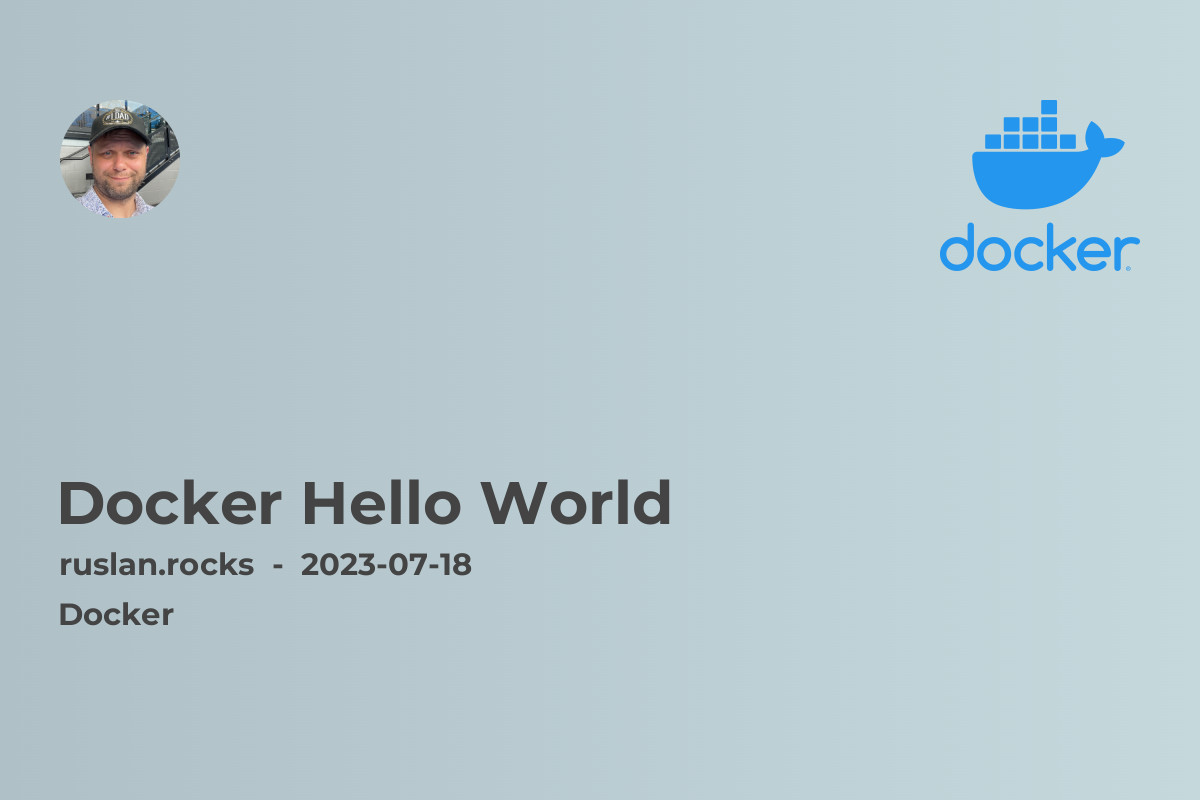
Docker has become an essential tool in the world of software development and deployment. With Docker, you can easily package your applications and their dependencies into containers, making it easier to deploy and run them consistently across different environments. In this article, we will explore the basics of Docker and walk you through a simple "Hello World" example to get you started on your containerization journey.
What is Docker?
Docker is an open-source platform that allows you to automate the deployment, scaling, and management of applications using containerization. Containers are lightweight, standalone units that encapsulate everything needed to run an application, including the code, runtime, system tools, and libraries. With Docker, you can easily build, ship, and run any application, from simple command-line tools to complex microservices architectures.
Getting Started with Docker Hello World
To get started with Docker, you first need to install it on your local machine. The installation process varies depending on your operating system, but detailed installation guides can be found on the Docker website. Once Docker is installed, you can verify that it's working correctly by running the following command in your terminal:
docker version
This will display the version of Docker installed on your machine along with other information about the Docker client and server.
Next, let's dive into a "Hello World" example to understand how Docker works. Create a new directory on your machine and navigate to it in your terminal. In this directory, create a new file called Dockerfile (without any file extensions). Open the Dockerfile in a text editor and add the following content:
# Use the official Python base image
FROM python:3.9
# Set the working directory in the container
WORKDIR /app
# Copy the current directory contents into the container at /app
COPY . /app
# Install the dependencies
RUN pip install -r requirements.txt
# Set the command to run when the container starts
CMD ["python", "app.py"]
In this Dockerfile, we define a container based on the official Python image from Docker Hub. It sets the working directory to /app and copies all the files from the current directory to the /app directory in the container. Then, it installs the dependencies specified in the requirements.txt file and sets the command to run the app.py script.
In the same directory, create a new file called app.py with the following content:
print("Hello, Docker!")
This simple Python script will be executed when we run our Docker container. Finally, create an empty file called requirements.txt, as it is referenced in the Dockerfile.
Now that we have our Dockerfile and application code ready, it's time to build a Docker image. In your terminal, navigate to the directory where your Dockerfile is located and run the following command:
docker build -t hello-world .
This command tells Docker to build a new image with the tag hello-world based on the Dockerfile in the current directory. The dot at the end of the command signifies the build context, which includes all the files in the current directory.
Once the build process is complete, you can run a container based on the newly built image by executing the following command:
docker run hello-world
Congratulations! You have just run your first Docker container. You should see the output "Hello, Docker!" printed in your terminal. This simple example demonstrates how Docker allows you to package and run applications in isolated containers, independent of the underlying host system.
Why Use Docker?
Docker provides several benefits for software development and deployment:
-
Consistency: Docker containers ensure consistent environments, allowing developers to easily reproduce and share the exact dependencies needed for their applications.
-
Scalability: Docker makes it easy to scale your applications by quickly spinning up new containers or replicating existing ones to handle increased traffic or demand.
-
Isolation: Containers provide a level of isolation between applications and their dependencies, reducing the risk of conflicts and compatibility issues.
-
Portability: Docker images can be run on any machine with Docker installed, making it easy to deploy applications across different environments, from development to production.
-
Efficiency: Docker's lightweight nature allows for faster deployment times and efficient use of resources, making your applications more efficient and reducing costs.
By leveraging these benefits, Docker has revolutionized the way software is developed, deployed, and managed, enabling faster and more reliable delivery of applications.
Related Topics
If you're interested in learning more about Docker and containerization, here are some additional articles that you may find helpful:
-
Introduction to Containerization: Learn the basics of containerization and its advantages in modern software development.
-
What Is Docker: Dive deeper into the fundamentals of Docker and understand its key components and features.
-
Docker vs Virtual Machine: Which is the Better Choice?: Explore the differences between Docker containers and virtual machines and determine which technology is best suited for your use case.
-
Docker Compose: Discover how Docker Compose simplifies the management of multi-container applications and allows you to define and run complex application stacks.
-
Docker Networking - How To Connect Containers: Learn how to establish network connections between Docker containers and enable communication between them.
These articles will provide you with a deeper understanding of Docker and its related technologies, enabling you to utilize it effectively in your software development workflow.
In conclusion, Docker is a powerful tool that simplifies application deployment and management through containerization. By following the "Hello World" example and exploring the related topics, you can start leveraging Docker to streamline your development process and achieve greater efficiency in your software projects.
Official websites:
